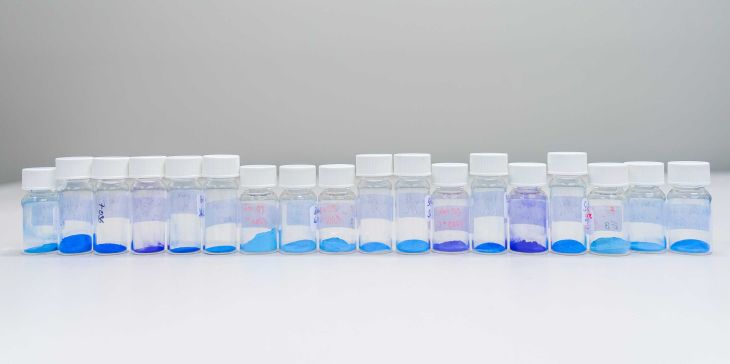People often want to extract meaning or significance from patterns. Artificial intelligence has its own role to play in this respect, as it already helps us to recognise patterns and, at best, to make predictions and forecasts. While deep learning and artificial networks are often referred to as a black box, we also speak about “data alchemy”. The new exhibition Data Alchemy -Observing Patterns from Galileo to Artificial Intelligence at the Collegium Helveticum is an artistic and scientific exploration of artificial intelligence, which has attracted a great deal of attention in recent months due to the popularisation of large language models (LLM) such as ChatGPT.
"Blue Transmutations" is one of the works on view at the exhibition. It is a collaboration between artists Liat Grayver, Marcus Nebe and Robert Nissler from the Nanoparticle Systems Engineering Lab at ETH Zurich. Painter Liat Grayver uses Egyptian blue pigments on Japanese paper. The results are recorded with a special black-and-white camera at ETH Zurich. These images, in turn, are transformed into three separate montages by video artist Marcus Nebe and projected onto selected paintings, which have also been created using Egyptian blue on Japanese paper.














